Manas National Park
HOME OF THE INDIAN ELEPHANT
Manas National Park, nestled in the foothills of the Eastern Himalayas within Assam's Chirang and Baksa districts (Bodoland Territorial Region), is a significant wildlife haven.
This UNESCO World Heritage Site serves as both a tiger reserve and a crucial elephant reserve. For wildlife enthusiasts, spotting a male tusker in its natural habitat at Manas is a truly unforgettable experience, as the park is home to an extant recognized subspecies of the Asian elephant.


INDIAN ELEPHANT
The Indian elephant is a type of Asian elephant found in mainland Asia. It's one of three recognized kinds of Asian elephants still alive today.
BEHAVIOUR
Indian elephants usually live in small groups made up of related females, their daughters, and young, immature sons. They are very social animals and have strong, complicated relationships with each other. These elephants often work together to raise their babies and keep the herd safe.
SIZE
Height: 6.6 - 9.8 feet at the Shoulders
Weight: 2000-5000 Kgs
ON THE LEFT
A male tuskless elephant called "Makhna" Read more about this below.
Birds & Wildlife At Manas Wildlife Sanctuary

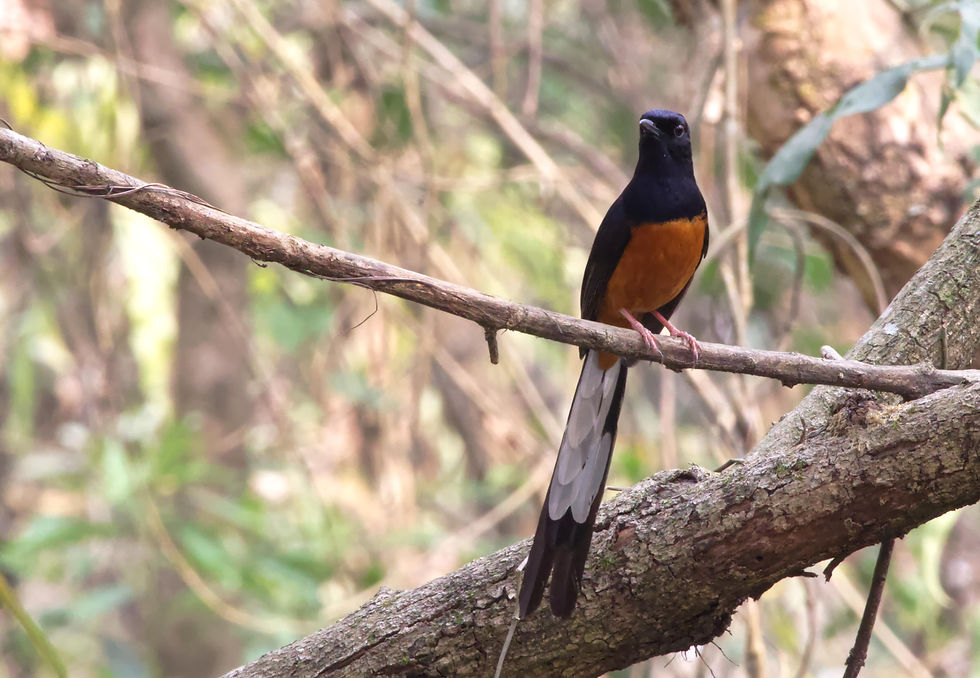

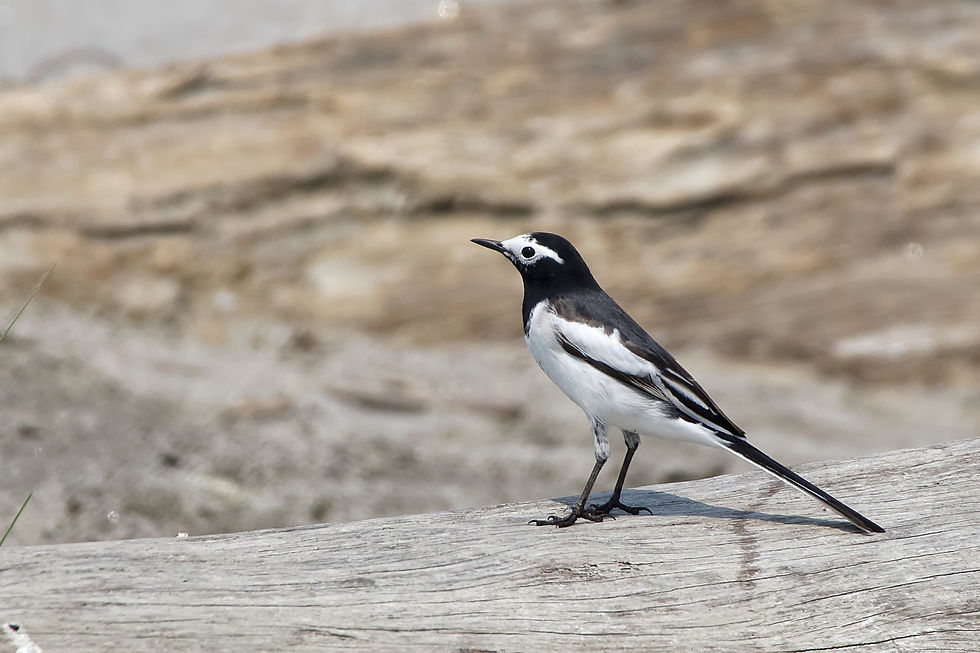


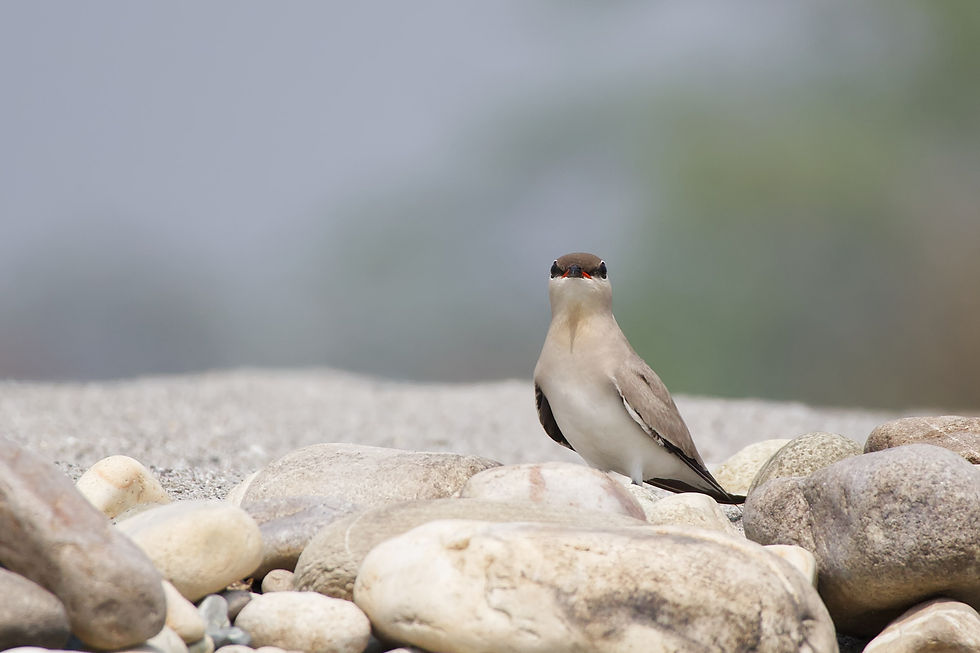




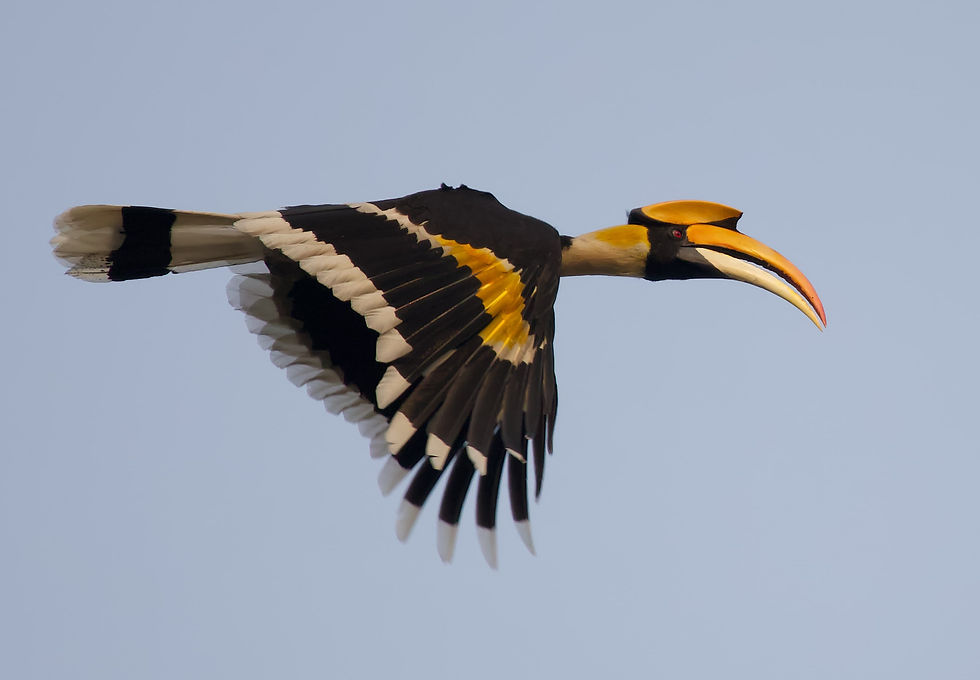


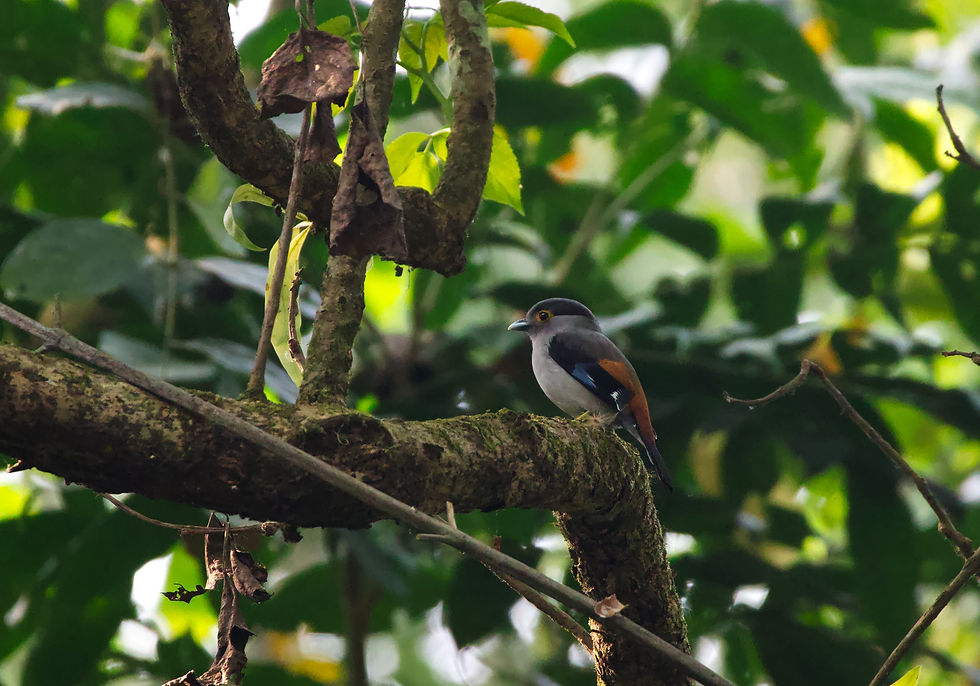
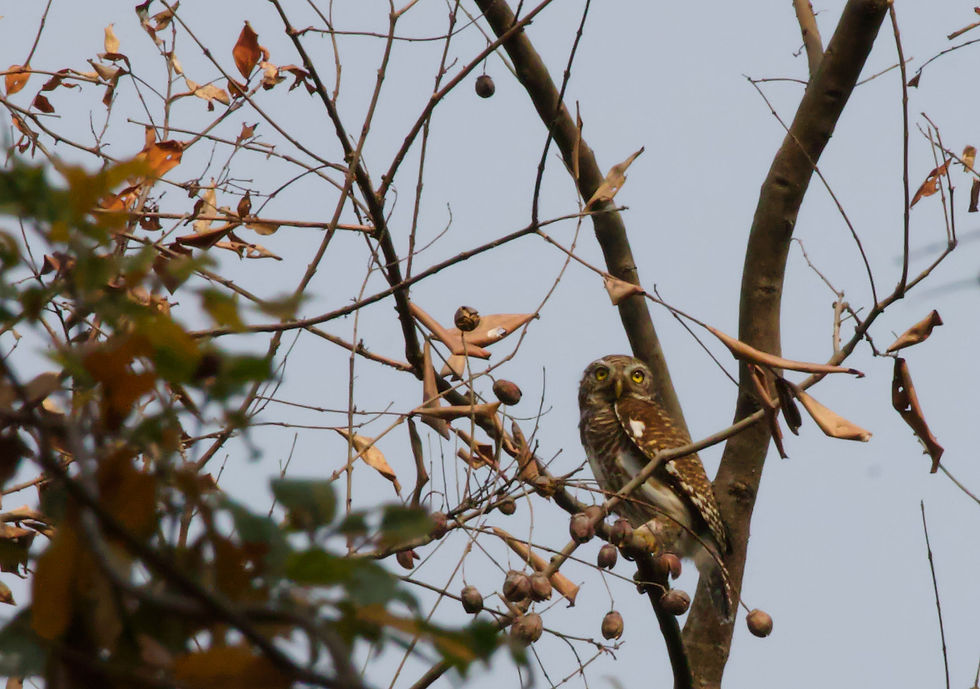
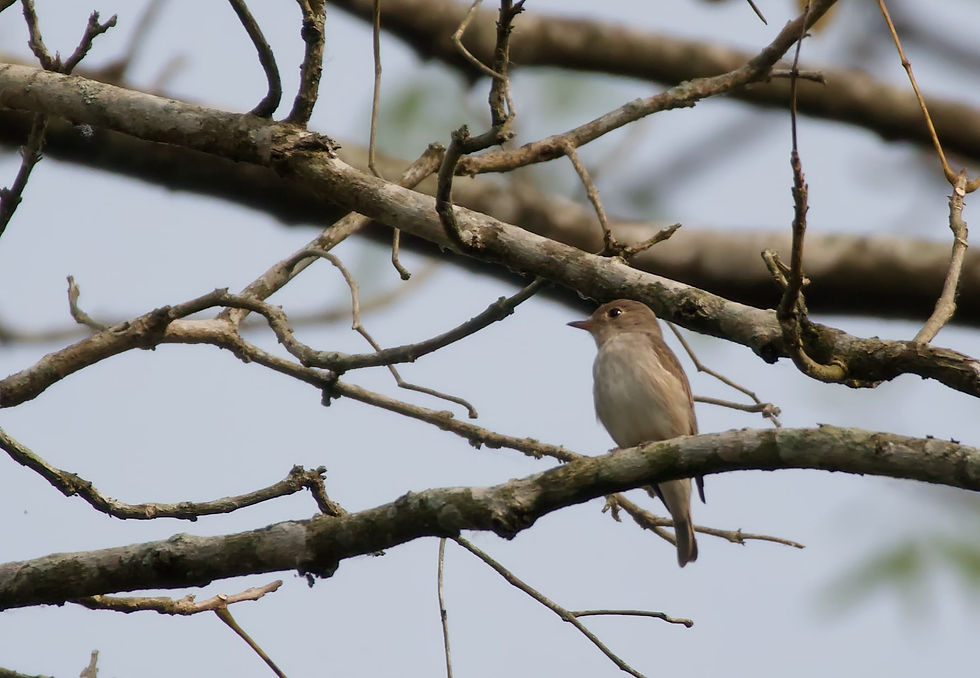




HOARY-BELLIED HIMALAYAN SQUIRREL
The Irrawaddy squirrel, also known as the hoary-bellied Himalayan squirrel, is a type of rodent found in Bangladesh, China, India, Myanmar, and Nepal.
Most Irrawaddy squirrels in Myanmar live on the western side of the Irrawaddy River.
These squirrels are adaptable and can live in various forest environments, including:
-
Forests where trees lose their leaves (deciduous broad-leaved woodland)
-
Forests with trees that stay green all year (coniferous evergreen forests)
-
Areas that mix farms and forests
-
Forests that are growing back after being cut down (secondary growth forests)
They can also be found in flat lowlands and lower mountain areas, up to about 1500 meters high.
Unfortunately, the Irrawaddy squirrel is losing its natural home, which threatens its survival.
IDENTIFICATION
Irrawaddy squirrels come in different fur colors. Some are greyish-brown or reddish-brown, while others have a grizzled (salt-and-pepper) appearance. You might also spot some with dark tips on their tails and light-colored patches on their hips.
SIZE
Head to Body Length 20 cm approx. | 7.87 inches
Tail Length 20 cm approx. | 7.87 inches

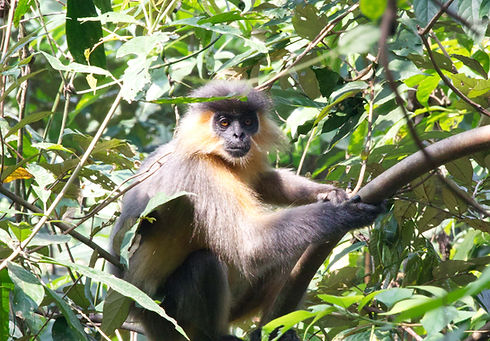
CAPPED LANGUR
The capped langur is a type of primate (a family of animals that includes monkeys and apes). You can find them in subtropical and tropical dry forests in northeast India, Bhutan, Bangladesh, and Myanmar. They live in trees and eat plants from 43 different species.
BEHAVIOUR
In Arunachal Pradesh, capped langurs spend almost 40% of their day eating leaves, flowers, and fruits. Leaves make up the biggest part of their diet, nearly 60%.
SIZE
Head to Body Length: 50 to 70 cms excluding tail
Males: 9 to 14 Kgs | Females 6 to 10 Kgs
FIND OUT MORE
Checkout Sanctuary Asia's Article on The Capped Monkeys Of India's Northeast.
THE GREAT NAWAB BUTTERFLY
The great nawab (scientific name: Polyura eudamippus) is a type of butterfly. It is found in India, specifically in northeastern regions like Sikkim and Assam, as well as in Nepal, Bhutan, Burma, China, Taiwan, Malaysia, and Indochina. It belongs to a group of butterflies known as "rajahs and nawabs," which are part of the larger family of brush-footed butterflies.
BEHAVIOUR
During display, the demoiselles can elongate the feathers on the sides of their head.
SIZE
Wingspan can reach 98–121 millimetres (3.9–4.8 in)
FIND OUT MORE
Read this article from Sanctuary Asia to find out why this butterfly is named "The Great Nawab." Explore Winged Whimsy: Mormons, Nawabs, Pansies and More

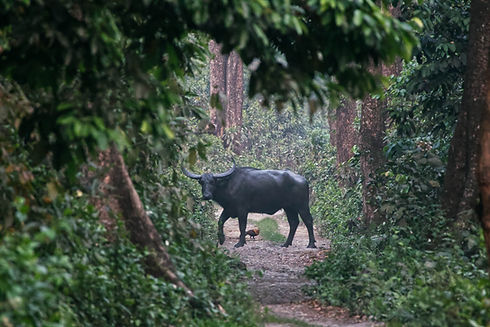
WATER BUFFALO
The wild water buffalo, also known as the Asian buffalo, is a large animal related to cows, found in the Indian subcontinent and Southeast Asia.
Sadly, it's been classified as Endangered since 1986 because there are fewer than 4,000 left.
BEHAVIOUR
They love water and spend most of their day submerged in it, sometimes with only their nostrils showing. They do this because it serves an important purpose: water buffalo don't have enough sweat glands to cool themselves down. That's why water or mud holes are essential for them.
SIZE
Weight: 600 to 1200 Kgs
Head to shoulder length: 240 to 300 cm | 94.49 - 118.11 inches
Shoulder height: 150 to 190 cm | 59.06 to 74.80 inches
OTHER CHARACTERISTICS
The wild water buffalo is larger than the domestic water buffalo.


